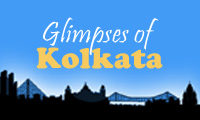Indian Museum

Indian Museum at Kolkata. Courtesy: Wikipedia
The Indian museum, popularly known as ‘Jadughar’ is the ninth oldest museum across the world. It is the largest museum across India and boasts exquisite collections of armor, antiques, ornaments, skeleton, fossils, mummies and beautiful Mughal paintings. Over 60 galleries display a collection ranging from ancient sculpture and Egyptian mummies to medieval and contemporary paintings, and even a sacred relic of the Buddha. The museum was established by the Asiatic Society of Bengal in 1814. Designed by Walter B Granville, the museum has to wings converging on a portico supported by Corinthian columns. The name of the founder curator was Dr Nathanial Wallich, who was a famous Danish botanist. Presently, the Museum is preparing passionately to celebrate its bicentennial in February 2014. The Museum’s southern wing now houses the Government College of Art and Craft founded in 1854, which moved to these premises in 1892.
Location of Indian Museum, Kolkata
The Indian Museum is located in Chowringhee on Jawahar Lal Nehru Road in Kolkata.
Detail and history about Indian Museum, Kolkata
The Indian Museum in Kolkata was founded in 1814 within the Asiatic Society Building. It was founded by a famous botanist from Denmark, Dr. Nathaniel Wallich. It is one of the oldest museums founded across the globe. In the year 1875, the museum was shifted to the present building, which is truly an architectural delight, designed in Italian style by the famous architect Walter B Grawille. The museum was opened to public in 1878. It houses over 60 galleries and is divided into six prime sectors – Anthropology, Art, Geology, Archaeology, Zoology and Industry. The museum has three floors spanning an area of around 930 square meters.
Art Section: The art section of the Indian Museum at the first and second floor boasts an exquisite Art collection, which comprising textiles, miniature paintings, beautiful art objects from Asian countries – Japan, China, Tibet, Nepal, Sri Lanka, Myanmar, Java, Thailand and Kampuchea. Jamdani and Muslin from Dhaka, Phulkari of Punjab, Baluchari textile of Murshidabad, Persian carpets, Chamba rumal, Kanthas of Bengal, metal images, wood carvings; Mughal, Persian, Pahari, Rajasthani, Deccani miniature paintings, Tibetan, Nepalese temple banners and Bengal schools paintings.
The South East Asian gallery of the Art section houses three distinctive galleries, showcasing artifacts from Burma, China-Japan and Nepal-Tibet. The gallery of China-Japan displays beautiful porcelains, ivory and rhinoceros horn carved articles, wine cups, exquisite paintings etc. The Burmese gallery houses a wonderful collection of brass and bronze figures, silverwares, wooden carvings and lacquer ware objects, depicting ‘Jatakas’, scenes from the epic ‘Ramayana’ etc.
The Nepal-Tibet gallery is admired with a number of bronze images and woodcarvings. The bronze image of Siva, which belong to the 9th-10th century and the wood-made figure of Salabhanjika of the 15-16th century is the star attraction here. Bronze figures of Yamantaka and Aryavalokitesvara and Yabyum figures of Samvara are also equally admirable. The ritual objects like incense-burner, butter lamp and bone-apron made of human bones are truly noticeable.
Anthropological Section: The Anthropological Section showcases objects belonging to both tribal and non-tribal peoples of India. The gallery houses a range of rare musical instruments.
Archaeological Section: The Archaeological Section showcases stone-age artifacts from India and abroad, along with prehistoric antiquities from Harappa, Mohenjodaro, ranging from 2500 B.C. to 1500 B.C. This section also treasures an excellent collection of Indian coins and a number of Indo-Muslim architectural pieces.
Some notable galleries in this section are Egyptian, Bharhut, Orissan Art, Coins, Gandhara and many more. Bharhut gallery showcases the railings and gateway of the Buddhist Stupa with exquisite sculptures and carvings, depicting scenes from the life of Buddha. All these were excavated by Sir Alexander Cunningham from Bharhut in Madhya Pradesh in 1847. The gallery also houses an urn containing ashes of Buddha. Gandhara gallery boasts the best collection of Buddhist Sculptures from Gandhara region. The star attraction of the Egyptian gallery is a ‘mummy’ of 4000-years-old, paintings and sculptures. The coin gallery flaunts an incredible collection of coins dating back to the 5th century BC. This gallery houses gold coins introduced by the great Kanishka, Samudragupta, Kumaragupta-1, Akbar and Jahangir.
Geological Section: The huge Geological Section boasts over 80,000 specimens, divided in four galleries, flaunting varieties of precious stones, meteorites, ornamental building stones, minerals, rocks and fossils.
Zoological Section: The Zoological section is enriched with specimens of fish, insects, mammals, reptiles and birds.
Industrial Section: The Industrial Section flaunts a range of botanical specimens bearing upon forestry, medicine, agriculture and cottage industry.
- The Kolkata Indian Museum was established in 1814 and it is considered the 9th oldest museum of the world
- Indian Museum was founded by a famous botanist from Denmark called Nathaniel Wallich.
- Indian Museum is the largest and the earliest multipurpose Museum not only in Indian subcontinent but also in the Asia-Pacific region of the world.
- The museum boasts over 60 galleries and is divided into six prime sectors.
- Presently, the museum exhibits an Egyptian mummy, the Buddha’s ashes, the Buddhist stupa from Bharhut, the Ashoka pillar, fossil skeletons of prehistoric animals, rare antiques and an excellent collection of meteorites.
- The Anthropological and Zoological sections of the Indian Museum formed the Zoological Survey of India in 1916, which afterwards gave rise to the Anthropological Survey of India in 1945.

